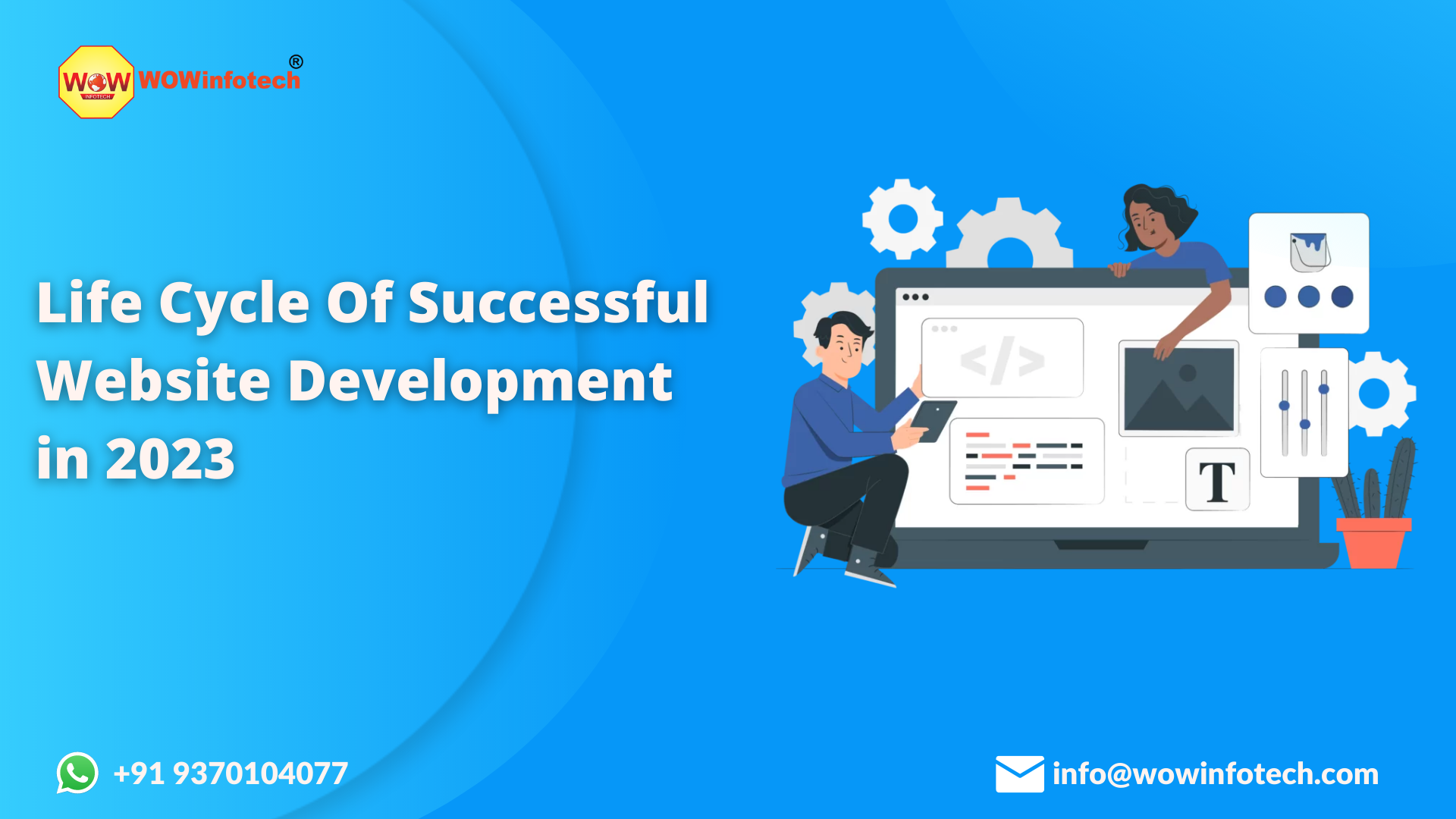Life Cycle Of Successful Website Development
Website development is a complex process that requires careful planning, execution, and testing to ensure that the final product is functional, user-friendly, and visually appealing. The development life cycle (SDLC) is a series of steps that are followed to create a website that meets the needs of the client or customer. In this blog post, we will discuss the different steps of the website development life cycle and how to ensure a successful outcome.
Step 1 Planning:
The first step of the website development life cycle is the planning step. During this step, the client or customer will work with the development team to define the scope of the project, set goals, and determine the budget and timeline for the project. The client will also provide information about the target audience and any specific requirements for the website. This step is critical as it sets the foundation for the rest of the project and ensures that all stakeholders are on the same page.
Step 2 Design:
The second step of the website development life cycle is the design step. During this step, the development team will create wireframes and mockups of the website to get a sense of its layout and functionality. The client will review these designs and provide feedback, which the development team will use to make any necessary revisions. This step is also where the development team will decide on the technologies to be used in the website.
Step 3 Development:
The third step of the website development life cycle is the development step. During this step, the development team will use the wireframes and mockups to create the actual website. This will involve writing code, integrating any necessary third-party tools or software, and testing the website to ensure it is functioning properly. This step is where the majority of the work will be done, and it is critical that the development team stays on schedule to ensure the project is completed on time.
Step 4 Testing:
The fourth step of the website development life cycle is the testing step. During this step, the website will be thoroughly tested for bugs, compatibility issues, and usability. The development team will use various testing tools to ensure that the website is fully functional and meets all the requirements specified in the planning step. This step is critical as it ensures that the website will be ready for launch.
Step 5 Deployment and Maintenance:
The final step of the website development life cycle is the deployment and maintenance step. During this step, the website will be deployed to a live server and made available to the public. The development team will also provide ongoing maintenance and support to ensure that the website continues to function properly and is updated as needed.
To ensure a successful website development life cycle, it is important to have clear communication and a strong working relationship between the client and the development team. The client should provide clear and detailed requirements and be available to provide feedback throughout the project. The development team should be organized, efficient, and able to meet deadlines. And the client and team should be open to feedback and willing to make changes as needed.
Another important aspect of a successful website development life cycle is testing and quality assurance. This includes testing the website for functionality, usability, and compatibility across different devices and browsers. It is also important to have a plan in place for ongoing maintenance and support to ensure that the website remains up-to-date and continues to function properly.
In conclusion, the website development life cycle is a complex process that requires careful planning, execution, and testing to ensure a successful outcome. By following the steps of the life cycle and maintaining clear communication and a strong working relationship with the client, the development team can ensure that the website is functional, user-friendly, and visually appealing. Ongoing testing and maintenance will also ensure that the website continues to meet the needs of the client and the target audience. By following these guidelines, you will be able to create a website that will be successful.
#WebsiteDevelopment #WebsiteDesign #WebsiteDevelopmentProcess #WebsiteDevelopmentCompany #WebDevelopment #WebDevelopmentCompany #WebDevelopmentLifeCycle
-

Krishna Handge
WOWinfotech
Jun 09,2023
